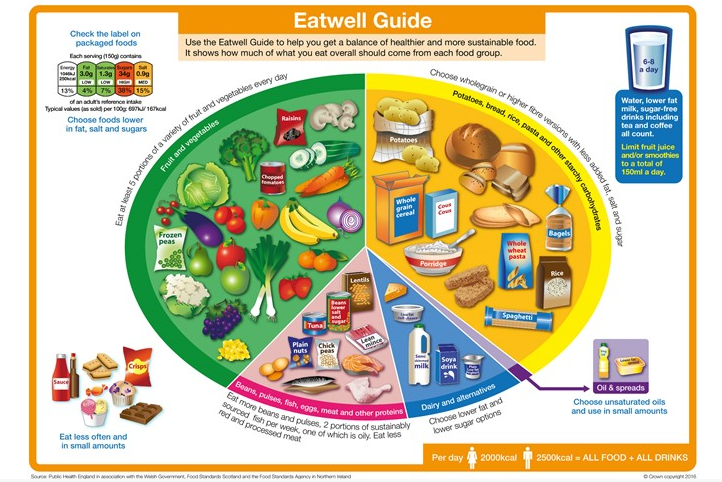You have an important role in developing your child’s knowledge and attitudes to, healthy eating and oral health.
Read the transcript for this film Low sugar and no sugar alternatives
Mealtimes for young children should provide the opportunity to explore different tastes, smells and colours of food.
Getting started
Make sure you give your child a variety of foods. A varied, tasty and enjoyable diet in a child’s first years will help your baby and toddler grow and develop their maximum potential, but also help them develop lifelong healthy eating habits.
Try to include something from each of the five food groups throughout the day:
- Fruit & vegetables
- Potatoes, bread, rice, pasta and other starchy carbohydrates
- Beans, pulses, fish, eggs, meat and other proteins
- Dairy and alternatives
- Oils and spreads

How to encourage healthy eating
To encourage healthy eating, it is important to reduce overall snacking and concentrate on providing healthy family meals. Children need energy as they grow to develop and keep them active.
Younger children have small appetites and need regular meals with snacks in between, and do need some full-fat foods in their diet.
Try to give your child healthy, sugar-free, snacks between meals to prevent tooth decay. There are some snack foods that can be harmful to children’s teeth if eaten frequently and they do not contain the important nutrients your baby/child needs for healthy growth and development. These include soft drinks, sweets, chocolate confectionery, chocolate and cream-filled biscuits, sugary desserts, highly sweetened cereals and sugared sticky yogurts.
Suggestions for healthy snacks from one year old
- Fresh fruit – grapes, melon, a banana, strawberries, a tangerine, a pear, a peach, a plum, an apple. Fresh fruit kebabs can be fun to make and eat.
- Fresh vegetables – Fresh vegetables – tomatoes sliced into quarters, celery, carrot and cucumber sticks, sliced peppers, sugar snap peas.
- Tinned fruit and vegetables – in water not salt or syrup.
- Sandwiches – try various fillings: cold meat, tuna, grated cheese, egg, salad items, tomato or banana.
- Some other choices – bread sticks, oatcakes, crackers, rice cakes, a plain or cheese scone, a crumpet, a bagel, a potato scone, a pancake, a toasted teacake.
Eatwell Guide
The Eatwell Guide applies to most people regardless of weight, dietary restrictions/preferences or ethnic origin. However, it doesn’t apply to children under two years because they have different nutritional needs. Between the ages of two and five years, children should gradually move to eating the same foods as the rest of the family, in the proportions shown on the Eatwell Guide. Anyone with special dietary requirements or medical needs might want to check with a registered dietitian on how to adapt the Eatwell Guide to meet their individual needs.
Reducing the risk of choking
It important to supervise young children when they are eating and provide assistance if required. Some foods may need additional preparation, particularly for very young children.
To reduce the risk of choking:
- remove any stones or pips before serving
- chop small fruits and vegetables, like cherry tomatoes and grapes, into four equal pieces
- cut large fruits into slices rather than chunks
- avoid whole nuts.
Dried fruit and fresh fruit juice can be counted as one portion each of your 5-a-day fruit and vegetables. However, they contain hidden sugars and are best taken at mealtimes. Find out more about hidden sugars in food and drink.
Childsmile has put together some ideas to help you provide a variety of healthy, safe, snacks for both you and your children to enjoy at home and at school or play. Our resource library includes a diet diary to be used at home.
Plan ahead and take healthy snacks with you when you are out and about, in case suitable snacks aren’t available to buy.
Further information available here: Parent Club – Snacking, Food facts – Healthier Families – NHS and Best Start Grant and Best Start Foods.